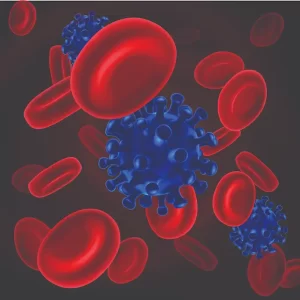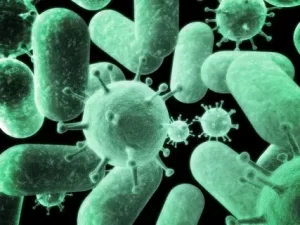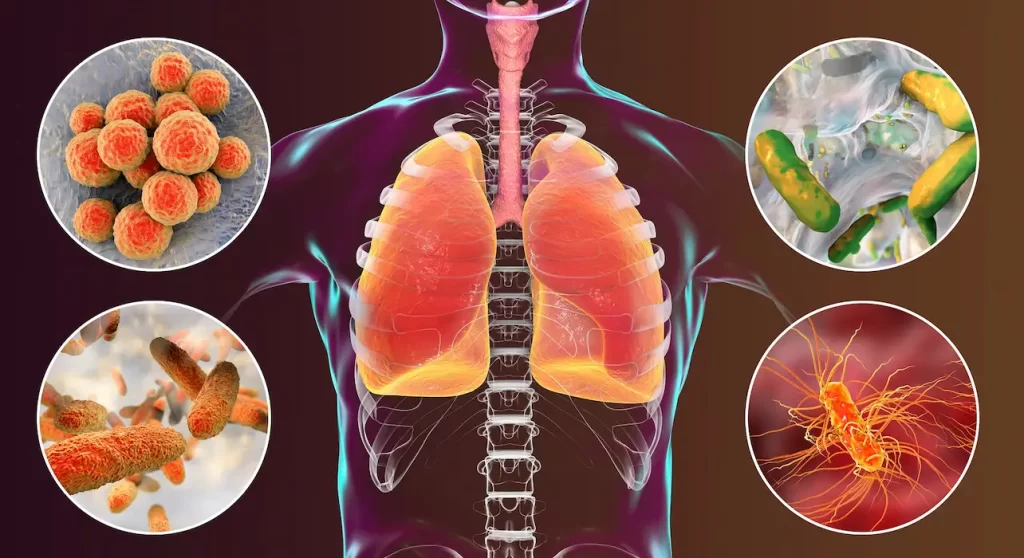Healthcare associated infections meaning (HAIs) a lot to healthcare facilities as it is associated with the health of the patient and huge costs for the hospital.
So, following ways of infection control is an effective way to prevent this danger and protect your institute.
So let us introduce the effect of this infection and how to prevent it.
What is healthcare associated infections meaning (HAIs)?
Healthcare associated infections meaning (HAIs) are when people who already receive health care from a condition get infected during their stay in the healthcare facilities.
This infection can occur due to different pathogens bacteria, fungi, viruses, or others.
Most of these infections are treated easily, but others lead to an increase in patient stay and hospital costs, causing distress to these patients.
HAIs cause many problems that affect patient health, as Health Association demonstrated that 1 in 31 patients acquire an infection in the hospital, which leads to the death of tens of thousands and increases the cost of the healthcare institute.
What is the difference between infection and disease?
The disease is a condition that impacts the body due to not normal stimuli.
That is associated with reducing in quality and changes in the structure of the organ.
There are two types of diseases:
- Contagious.
- Non-contagious.
They can be caused by one of the following:
- Exposed to injury or infection.
- Presence of main factors like hereditary factors or environmental factors.
- Follow an unuseful Lifestyle like an unhealthy diet or smoking.
But the infection is a contagion by a pathogen to infect the body tissues to increase their ability to multiply in cells and as a result the body makes a specific response from the immune system.
What increases the risk of healthcare-associated infections (HAIs)?
Many risk factors may increase the risk of acquiring an HAI they are:
The length of stay, when you have a long stay in the hospital as your risk increase to get infected, especially in the case of complex or multiple illnesses.
The procedures of surgical based on the type of surgery and its length, the risk can increase.
Followed techniques in hand hygiene as staff and patients do not follow inadequate hand hygiene practices leading to increase risk.
Exposure to invasive procedures that enter the body results in increasing infection rates, like IV cannulas or respiratory equipment, or drain tubes.
Non-intact skin in the form of wounds or burns or even ulcers increased the exposure area to the pathogen, leading to an increase in the risk of infection.
What is the biggest infection control risk in healthcare?
Anyone who enters the hospital has a high risk of getting healthcare-associated infections.
The risks are increased when patients are very sick and have surgery.
And especially for the following people:
- Premature babies.
- Children who are very sick.
- Elderly people.
- People who are frail.
- People who suffer from main conditions like diabetes.
- Persons with low immunity, like people who are treated with chemotherapy or steroids.
What types of healthcare-associated infections (HAIs) are common?

The most frequent types of infection in healthcare are the following:
- Respiratory tract infections with a percentage (22.8%).
- The surgical site infections with a percentage (15.7%).
- Urinary tract infections with a percentage (17.2%).
- Bloodstream infections with a percentage (7.3%).
- The gastrointestinal infections, and about half of the gastrointestinal with Clostridium difficile infections with a percentage(8.8%).
5 most common HCAIs

As healthcare associated infections meaning (HAIs) are associated with patient health and their rate in the healing process, we will discuss 5 commons of HCAIs
A surgical site infection
is the place where the surgeon made a cut in the skin to carry out the surgery, this is called a surgical site.
When the bacteria enter this surgical site, This results in the appearance of many symptoms like redness and swelling in this site.
This infection could be in two forms:
- Superficial effects on the skin layer.
- More severe effects on the tissues and the muscle found under the skin.
Surgical site infections cannot always be prevented, there are many factors that affect the probability of infection occurring:
- The general health of the patient.
- The time of surgery.
- The type and the duration of surgery that was carried out.
Pneumonia
Pneumonia is an infection that affects the lung and causes mild to severe illness.
Its symptoms appear as fever, shortness and difficulty in breathing, and cough.
Most pneumonia that occurs in the hospital occurs in intensive care, so they need assistance with breathing like a ventilator.
Pneumonia in some cases could be a severe infection and could be fatal.
Urinary tract infection
One of the main causes of urinary tract infection is using a catheter inserted into the bladder to drain urine.
The urinary tract includes four main organs:
- The kidneys, which are responsible for the filtration of the blood to produce urine.
- The ureters are tubes, in their main function is to carry urine from the kidneys to the bladder.
- The bladder stores urine till it fills to get out.
- Finally, the urethra is a tube that gets urine out from the bladder to the outside.
When germs get into the urethra a passing from it to the bladder, the symptoms of urinary tract infections begin in the form of:
- Urination more frequently than usual.
- Pain during urination.
- Fever and chills.
Bloodstream infection
A patient who has a catheter in their vein has more chance to get infected.
When the germs enter the blood, this lead to bloodstream infection.
This infection leads to the appearance of some symptoms like:
- Fever.
- General weakness.
- Nausea and vomiting.
Bloodstream infection is serious and can be fatal.
Gastroenteritis
When the bowel is exposed to infection causing inflammation of it, this is called Gastroenteritis.
The symptoms of gastroenteritis are:
- Diarrhea.
- Vomiting.
- Prescient of tummy cramps.
The two main pathogens responsible for gastroenteritis are:
- Clostridium difficile which results in severe illness in small patients and in small cases causes death.
- Norovirus causes mild illness.
What are the 4 types of infections?
The main cause of the Infection is viral, bacterial, parasitic, or fungal infections.
There’s also another rare group called transmissible spongiform encephalopathies (TSEs).
Viral infections.
The viruses don’t have the ability to reproduce till it is in the human cell by using cells’ machinery to make copies of themselves.
Bacterial infections.
Bacteria are found all around us, inside our bodies, and on our skin.
Some Bacteria are helpful and others are harmful, and certain types release toxins that affect patients and get them sick.
Fungal infections.
Also, fungi have useful types and harmful types but when there is an overgrowth of useful types or the harmful type enters the patient’s body through a cut or mouth that impacts their health.
Parasitic infections.
Through our bodies, the parasites can live and reproduce.
Parasites include worms and protozoa, which are single-celled organisms.
What are the 10 principles of infection prevention?
There are 10 principles your institute should follow:
- Presence of a leader responsible for infection control issues.
- There is a person responsible for the cleaning process to make sure that the premises are totally clean.
- Give accurate information about infectious patients to help the infection control department.
- Also, give complete information on infections that affect either the providing support or nursing/medical care.
- Give patients who get infections the appropriate treatment.
- All staff should have infection control training.
- Using the effective way of isolation facilities for patients who have an infectious disease.
- Present full diagnostic, microbiology, and virology laboratory services.
- Follow the infection control policies like safe handling and disposal of sharps using an aseptic technique.
- Follow the restrictions to ensure that healthcare workers are protected from infections.
How can patients help prevent healthcare-associated infections (HAIs)?
- Clean your hands using soap and running water, especially after using the toilet and before eating, you can also use an alcohol-based hand rub.
- Don’t hesitate to get confirmation from the nurses that they are cleaned their hands before checking you.
- If you notice any redness or swelling around the IV cannula, tell your nurse immediately.
- In case of your dressing is not clean, inform the nurse to change it.
- If you feel that your catheter is displaced, tell the nurse to check it.
- In case you have diarrhea, inform your nurse.
- When you cough or sneeze, use a protective mask to cover your mouth and nose.
- Complete your course of antibiotics at the same time.
- Ask your visitors if they have colds to delay their visit.
What is the role of the central sterilization unit in reducing infections?
The main key to infection control is the decontamination process, which ensures the cleansing of equipment and instrument to make sure that remove contaminants such as microorganisms are removed that make the equipment safe to reuse in operating.
Decontamination occurs in three levels:
- General cleaning.
- Then the disinfection process.
- Finally, the sterilization process.
All of these steps ensure effective decontamination to get rid of organisms at different life cycles.
The effective decontamination process of surgical equipment makes sure that the equipment meets the standards required by the health facilities to deliver the best possible outcome for the patients.
This can also decrease the rate of surgical site infections.
There is guidance on the preparation of the surgical site, procedures during the operation, and post-operation care of the wound must be followed to reduce the percentage of this type of infection.
Finally, we have discussed the healthcare associated infections meaning and how they affect critical departments, and the importance of the central sterile services department (CSSD) to follow the way to make your institute in a better position.
Read about :
What is central sterile supply department (CSSD)?
